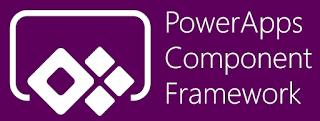While started working on specific Business Requirements related to custom layout, there is a always common question that "where to start, which of the component needs to use?", so explaining component in brief to get an idea for the particular Business Requirements.
- PCF (PowerApps Component Framework): PowerApps Component Framework (PCF) is a technology within the Microsoft Power Platform that allows developers to create custom components for use within Canvas Apps, Model-Driven Apps, and even in the Unified Interface of Dynamics 365. PCF enables you to create custom UI controls using familiar web development technologies like HTML, CSS, and JavaScript. These components can then be embedded into various app types and interact with data and events.
- Canvas App: Canvas Apps are a part of the Microsoft Power Platform that enables you to create custom applications with a visual interface. These apps are typically built by users who may not have deep coding skills, as they rely on a drag-and-drop interface to design screens and logic. Canvas Apps allow you to connect to various data sources, including databases, SharePoint lists, and other services, and then build user interfaces and workflows using a visual designer. They can incorporate various controls and elements to create interactive user experiences.
- Web Resource: A Web Resource is a concept primarily used in the context of Dynamics 365 and Power Apps to include custom web content within an application. A web resource can consist of HTML, JavaScript, CSS, or other web-related files. These resources can be used to extend the functionality of the platform by embedding custom UI elements, scripts, or even external web content directly within an application's user interface.
In summary:
- PCF
is a way to create custom UI components that can be used in various app
types within the Power Platform.
- Canvas
Apps are custom applications with visual interfaces created using a
drag-and-drop design approach.
- Web
Resources are used to include custom web content or scripts within
Dynamics 365 or Power Apps.
The choice between these technologies depends on your
specific requirements and your level of coding expertise. If you're looking to
create custom UI components with more complex interactions, PCF might be the
way to go. For building full-fledged applications with a visual interface,
Canvas Apps could be the better choice. And if you need to include custom web
content or scripts within your application, Web Resources can help you achieve
that.
References:
Thanks for reading this article. Hope this Article will help you. Cheers!!!










